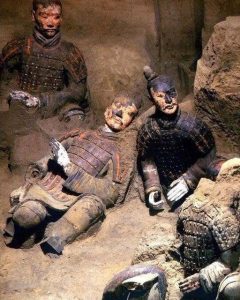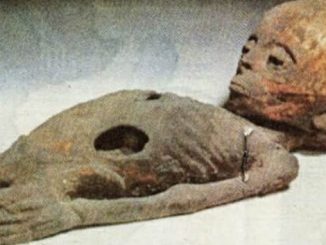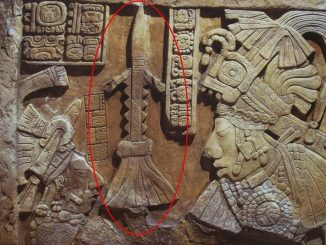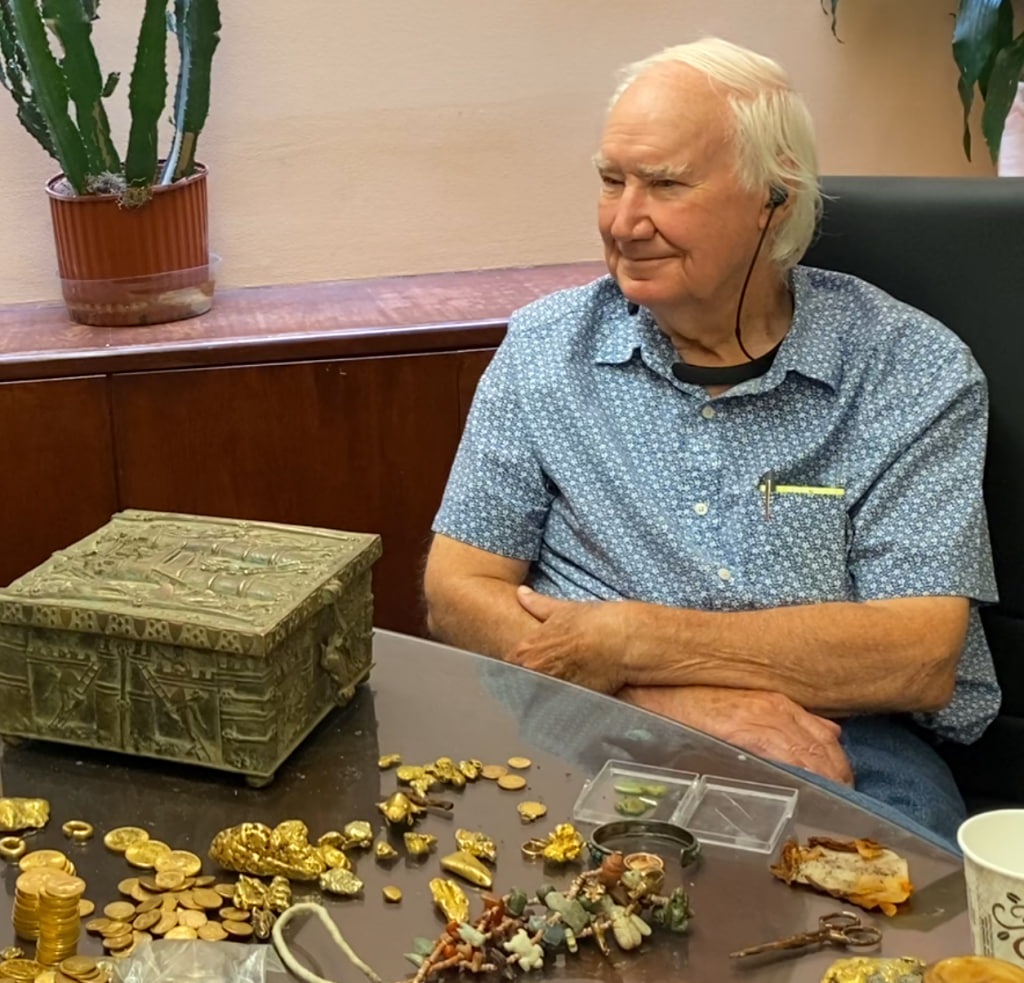
Forrest Fenn reunited with his hidden treasure. Photo by Jack Stuef.
The hopes and dreams of thousands were crushed in June, when Forrest Fenn announced that his storied hidden treasure, said to be worth $2 million, had been found. When the retired New Mexico art dealer died in September, he took the secret of the identity of the successful treasure hunter, who wished to remain anonymous, to the grave.
Yesterday, however, the man who solved Fenn’s decade-old quest came forward. His name is Jonathan “Jack” Stuef, and he is a 32-year-old medical student from Michigan.
“I am the finder of the Forrest Fenn Treasure,” Stuef wrote on Medium. “I searched for it for two years, and on June 6 of this year, I retrieved the treasure from the place I found it in Wyoming.”
Stuef had initially chosen not to reveal his name out of fear that he would be harassed by delusional fans of Fenn, who had himself dealt with stalkers, death threats, and even a home invasion over the years. But the US District Court for New Mexico ruled last month that Fenn’s family had to reveal Stuef’s identity in connection with an ongoing lawsuit from a thwarted treasure hunter.
Immediately after news of the treasure’s discovery was made public, 47-year-old Barbara Anderson, a Chicago lawyer, filed a complaint alleging that she was the one who had solved the puzzle. As reported by the Chicago Tribune, she claimed her find had been “stolen” by an anonymous man who had been taunting her by text for months and had hacked her computer.
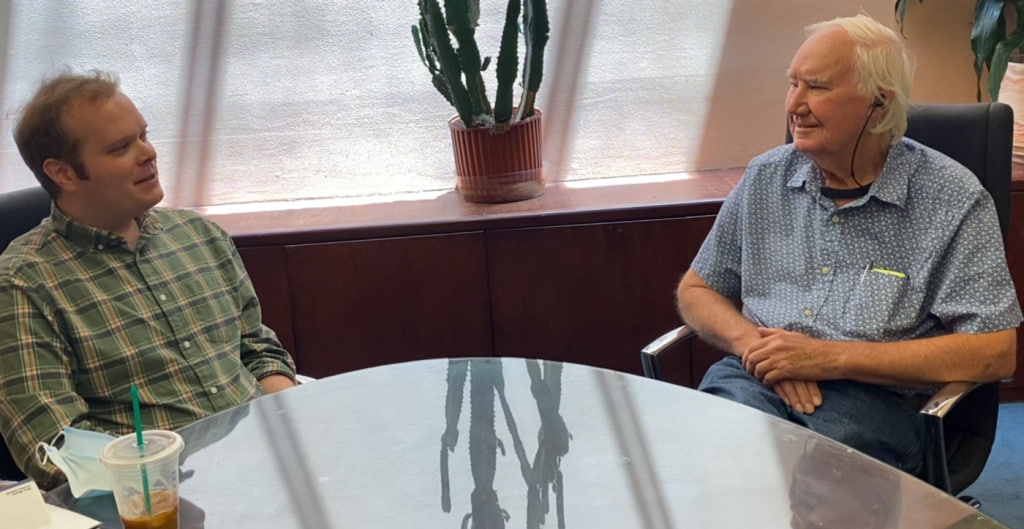
Forrest Fenn and Jack Stuef, who found his hidden treasure. Photo by Jack Stuef.
For his part, Stuef referred to Anderson as “a woman I do not know and with whom I have never communicated who has brought a meritless lawsuit against me.”
Shiloh Forrest Old, Fenn’s grandson, confirmed Stuef’s identity on the official hunt website. He hopes the revelation of the finder’s identify, accompanied by a photograph of Fenn and Stuef together, should help lay to rest suspicions that there was never any treasure, or that Fenn ended the hunt himself. Stuef and Fenn agreed to keep the hiding spot of the treasure a secret to avoid attracting excessive foot traffic that might damage the site’s natural beauty.
(Still, a team of dedicated Fenn treasure hunters now believes they have found the site in Yellowstone National Park, identifying the latitude and longitude based on homophones of numbers in Fenn’s poem, reports New York magazine.)
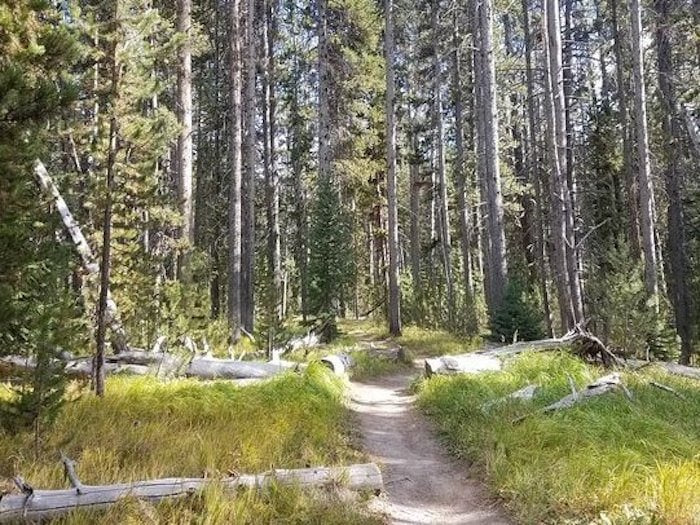
DeLacy Creek trail in Yellowstone National Park, near where Forrest Fenn’s treasure may have been found. Photo by Melissa via TripAdvisor.
Fenn, who was 90 at the time of his death, hid the 42-pound bronze chest in 2010, filling it with gold, gemstones, antique jewelry, and other valuable artifacts. His self-published memoir, The Thrill of the Chase, contained a cryptic poem offering clues as to the treasure’s whereabouts.
An estimated 350,000 people took part in the hunt over the years, including at least five people who are believed to have died in the process. Others quit their jobs or devoted their life savings to the challenge.
“I think I got a little embarrassed by how obsessed I was with it,” Stuef, who joined the search in 2018 but declined to tell friends and family about the full extent of his quest, told Outside magazine. “Maybe I didn’t want to admit to myself what a hold it had on me.”
After pinpointing the general location of the treasure, it took the medical student 25 days going over the area with a fine-toothed comb to actually find the chest.

Forrest Fenn’s treasure was allegedly buried in an ornate, Romanesque box filled with gold nuggets, gold coins and other gems. Courtesy of Forrest Fenn.
“There were a few times when I, exhausted, covered in scratches and bites and sweat and pine pitch, and nearing the end of my day’s water supply, sat down on a downed tree and just cried alone in the woods in sheer frustration,” wrote Stuef on an earlier Medium post, originally published anonymously.
After he finally struck gold, Stuef visited Fenn, temporarily reuniting the old man with his treasure before storing it in a New Mexico vault. The plan is to eventually sell it to help pay off Stuef’s student loans.
“I thought that whoever found the chest would be absolutely hated, because it ends everyone’s dream,” Stuef told Outside. “That’s something of a burden. I realize I put an end to something that meant so much to so many people.”




